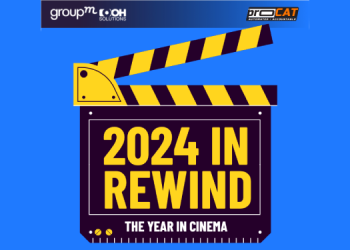Mumbai: The Prayag Maha Kumbh Mela 2025, currently underway in Prayagraj, Uttar Pradesh, is being hailed by urban Indians as a significant cultural and religious event, with 74% of those polled perceiving it as a symbol of preserving cultural and religious traditions. The Maha Kumbh Mela, a once-in-144-years occurrence, is being celebrated over a span of 45 days, marking the completion of a 12 Kumbh Mela cycle.
Ipsos India’s latest survey sheds light on the growing interest in the event, with a high level of awareness among citizens—42% claimed to be familiar with the Mela, while 32% were somewhat familiar. Despite this, 26% admitted to being unaware of the religious mega-event.

“Government has gone all out to build awareness around the Maha Kumbh Mela, given its once in 144 years occurrence and the religious significance of purifying one’s soul through the holy dip at the confluence of the holy rivers of the Ganges, Yamuna and Saraswati – the Triveni ghat, for attaining moksha/ liberation, through the Amrit Snan and Shahi Snan. And to encourage devotees to visit Prayagraj, govt has made elaborate arrangements through setting up of a temporary city over 4000 hectares, accommodating the pilgrims, with 1,50,000 tents for lodging and 1,50,000 toilets. Supplemented with mobile health units, emergency medical services, underwater drones, mobile app and other accoutrements. Prayagraj in Uttar Pradesh is hosting the Maha Kumbh Mela 2025, the world’s largest peaceful religious gathering,” said Parijat Chakraborty, Group Service Line Leader, Public Affairs, Corporate Reputation, CSR and ESG, Ipsos India.
Motivations Behind Interest in Maha Kumbh Mela
According to the survey, the top reasons driving people’s interest in the Maha Kumbh Mela include the desire for religious and spiritual experiences (64%), cultural experiences (53%), meeting holy men (50%), witnessing large-scale social gatherings (41%), curiosity (34%), and the grandeur of the event (18%).
Economic Impact of the Event
The Maha Kumbh Mela 2025 is expected to have a positive economic impact on the local community. As per the survey, 56% of urban Indians believe the event will benefit the local economy.
“Events of such magnitude, and since it is a rare holy occurrence, has drawn visitors in droves, from across the country and from overseas, benefiting the local economy. While govt had budgeted a cost of INR 63.82 billion (USD 740 mn), it is estimated to generate a revenue of 2 trillion (USD 23 bn) and boosting the local economy,” added Chakraborty.
Challenges Faced During Large-Scale Gatherings
Despite impeccable planning, large-scale events like the Maha Kumbh Mela come with challenges. The survey highlighted concerns regarding overcrowding (69%), sanitation and hygiene (49%), safety and security (49%), transportation and traffic control (46%), and environmental impact (37%). There were also concerns about medical and emergency services (29%) and cultural sensitivities (16%).
A segment of respondents, 40%, expressed concerns about the environmental impact of the large crowds. However, opinions were divided—30% remained neutral, 17% didn’t expect any negative environmental impact, while 11% were undecided.
The Maha Kumbh Mela 2025 has already witnessed substantial footfall, with millions flocking to the Triveni Ghat to take part in the Amrit Snan and Shahi Snan, believed to purify the soul and bring liberation. The Mela is particularly popular on auspicious dates such as Makar Sankranti, Mauni Amavasya, and Vasant Panchami. The culmination of the 45-day festival will take place on Maha Shivaratri, marking the end of this grand religious event.
Ipsos IndiaBus, a monthly omnibus survey conducted across 2200+ respondents in both urban and rural areas, provides valuable insights into the trends shaping the perception and impact of such significant religious events..

















